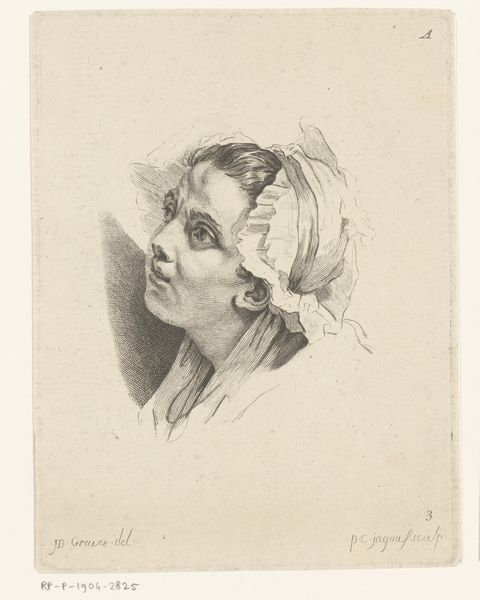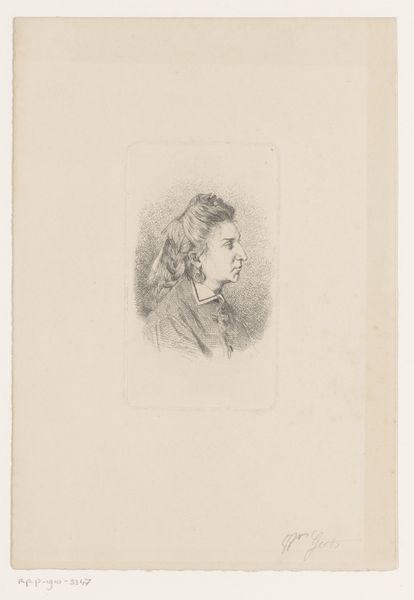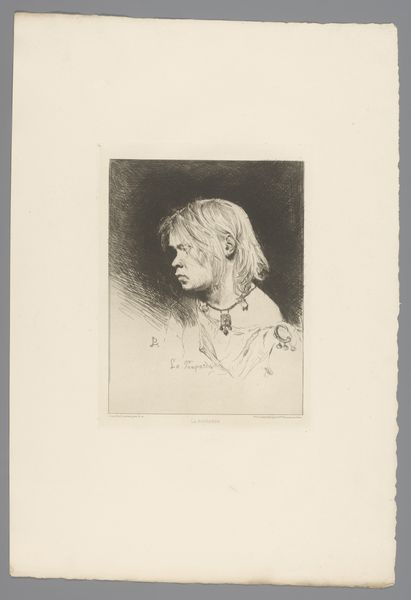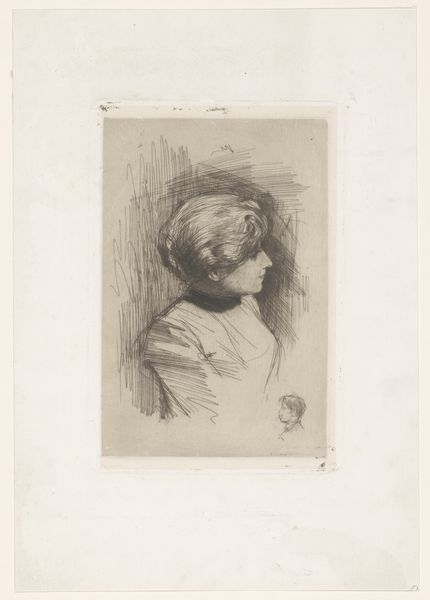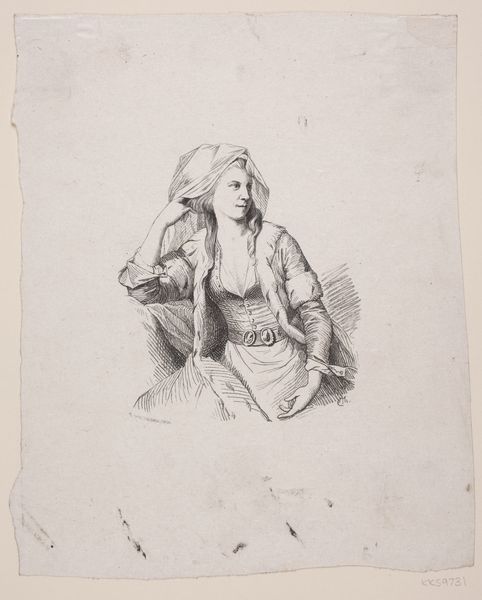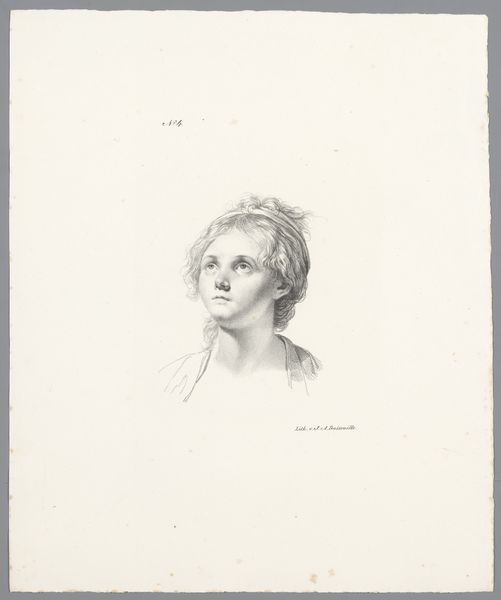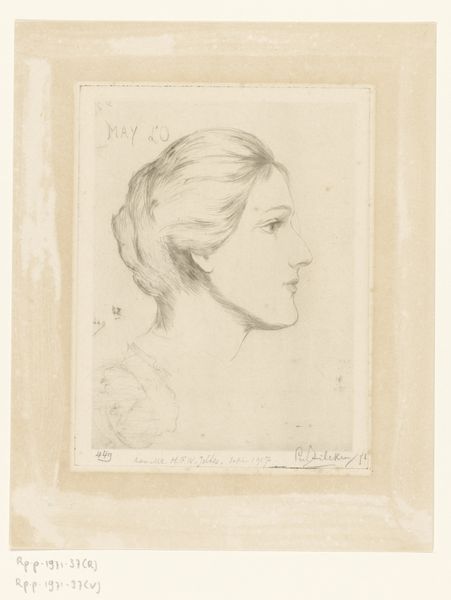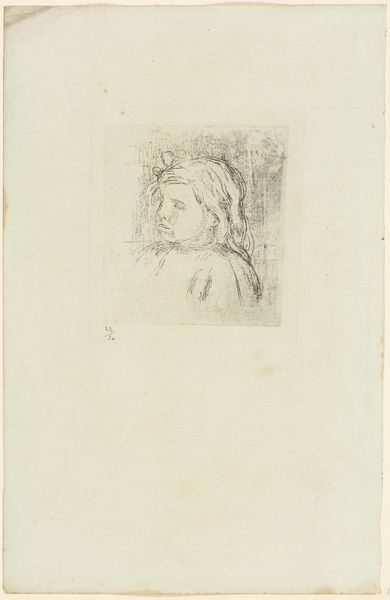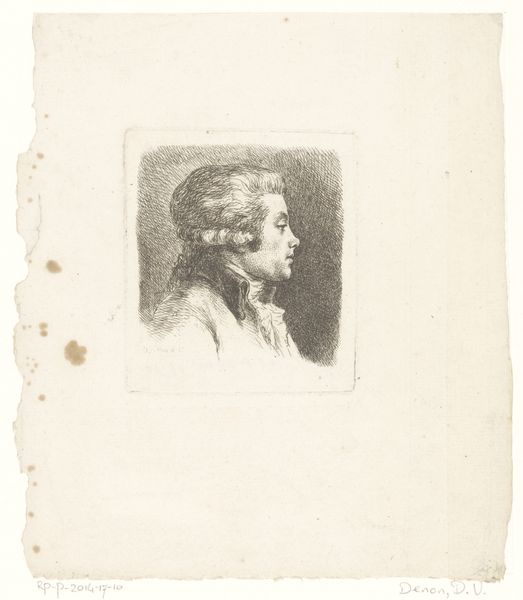
drawing, lithograph, print, paper, pencil
portrait
drawing
neoclacissism
lithograph
paper
pencil drawing
pencil
Dimensions: 107 × 101 mm (image); 215 × 295 mm (sheet)
Copyright: Public Domain
Editor: This is "Study of the Head of a Young Girl," dating back to around 1818, by Jean Antoine Laurent, currently housed at the Art Institute of Chicago. It appears to be a pencil lithograph, delicate and somehow ethereal. What draws your attention most when you look at this piece? Curator: The lithographic process is key here. Consider the materials: the specific stone used, the type of grease crayon, the paper itself. Each element influenced the final product. Laurent was manipulating the material conditions of printmaking. Were these materials readily available, or were they precious? How does that accessibility affect the image's potential audience, its cultural impact? Editor: So, rather than just seeing it as a portrait of a young woman, you’re focusing on the technical and economic factors that made the image possible? Curator: Precisely! This isn't just about aesthetic representation; it’s about understanding the labor involved, the industrial processes shaping art at the time. How does mass production change our perception of art and artistry? Consider the economic context: who commissioned and consumed these prints, and what role did these printed portraits play in the wider social fabric of the time? Was this a means for the burgeoning middle class to emulate aristocratic portraiture? Editor: That’s fascinating. I hadn’t really thought about the lithograph itself as something loaded with social meaning. Curator: Look at the print again. Is it pristine? Or are there imperfections? Consider how these "flaws," or material quirks, can point us towards the physical making of the print, evidence of the labor and choices of Laurent, who may have chosen this medium because it allows more output for less. How do those factor into our viewing experience? Editor: It’s incredible to think how a simple drawing can open up so many questions about production and consumption. Curator: Exactly! It allows you to see it beyond just an image and to begin examining the complex networks of materials, labour, and social values inherent in its creation. Editor: Thanks! This reframes my understanding of art history. Curator: And hopefully, it gets us all thinking more critically about the things we consume.
Comments
No comments
Be the first to comment and join the conversation on the ultimate creative platform.
